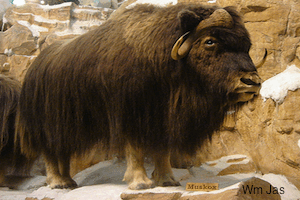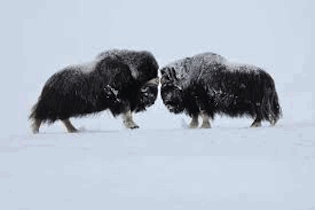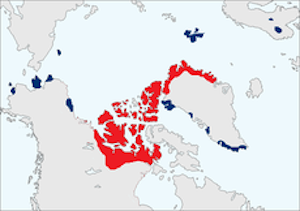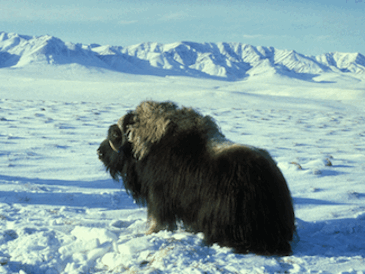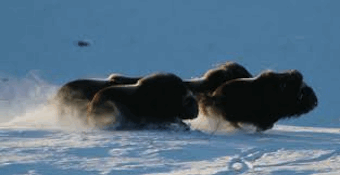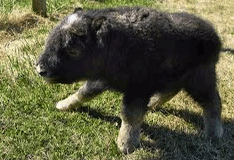|
The Arctic Muskox, A Cold Climate Survivor. Built to Rest Comfortably at -40… WOW!!!
In Inuit "Omingmak, "the animal with skin like a beard" The Arctic Muskox is a very impressive animal. A mature bull weights in the range of 600 to 700 pounds and mature cows from 400 to 500 pounds. They are one of the few animals on Earth that can live in -40' temperatures with high winds, snow and darkness for extended periods of time. Their secret to achieving this feat is in their fur coat that is up to eight time warmer than Sheep's wool. During the fall they grow an inner layer of insulating wool that is covered and protected on the outside by their long hair. They shed this inner wool or qiviut mid-summer and for several weeks look very ragged because of the process. Musk Oxen wool is highly sought after and the yarn can sell for up to $80.00 an ounce.
They usually live in herds of 10 to 20, but sometimes a herd may be close to 100 animals. During the summer mating season the bulls can be very dangerous and will often fight for dominance in the herd. They will charge each other with their famous crash as their two heads and horn structure come together.
This works well against other animals, but unfortunately not so well against human hunters. The Muskox will not bread the formation and run until the hunter is a few yards away making them an easy target. Because of this some herds have been completely wiped out and others placed in severe jeopardy over the years. With Canadian government protection numbers in the North American herd has remained very strong over the years. However in some other regions of the Arctic the animals have not fared so well and entire herd's have been driven to extinction.In some of those area's animals have been re-introduced and herd's are being re-established.
One example of the Muskox being re-introduced to an area is in Alaska where the species was wiped out during the late 19th. century. Today Muskox roam the tundra of Alaska once again.
Their excellent sense of smell will guide them to the source of food under the frozen Tundra.
The calves are born between April & June when the weather can still be very cold. They are born with their woolly coat, and able to stand up within minutes. The young calves will find warmth from the extreme Arctic cold in the shelter of their Mother's woolly skirt, with this protection and help the young calves are able to travel with the herd almost immediately.
Return from Muskox to Home page
|
